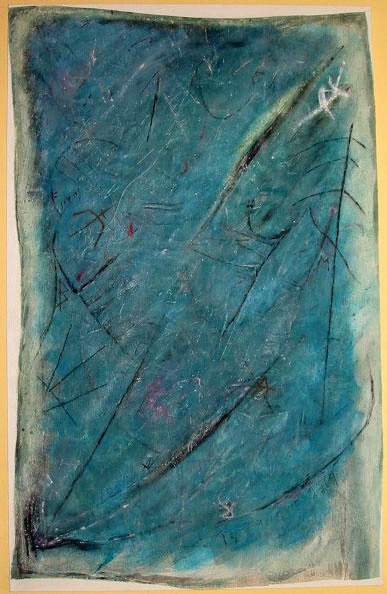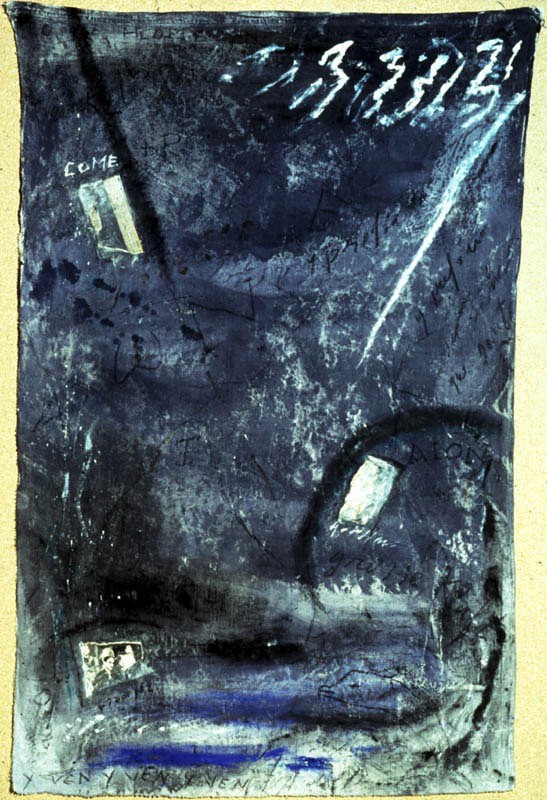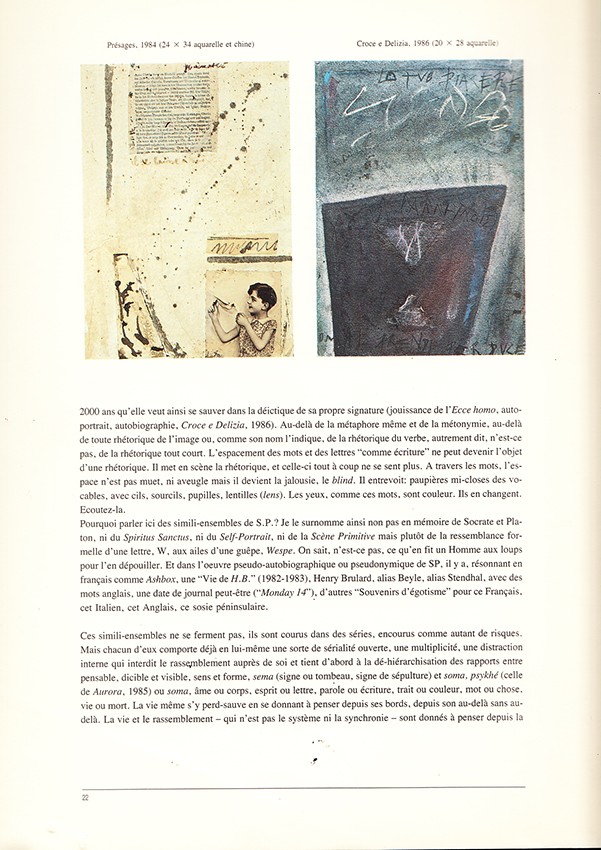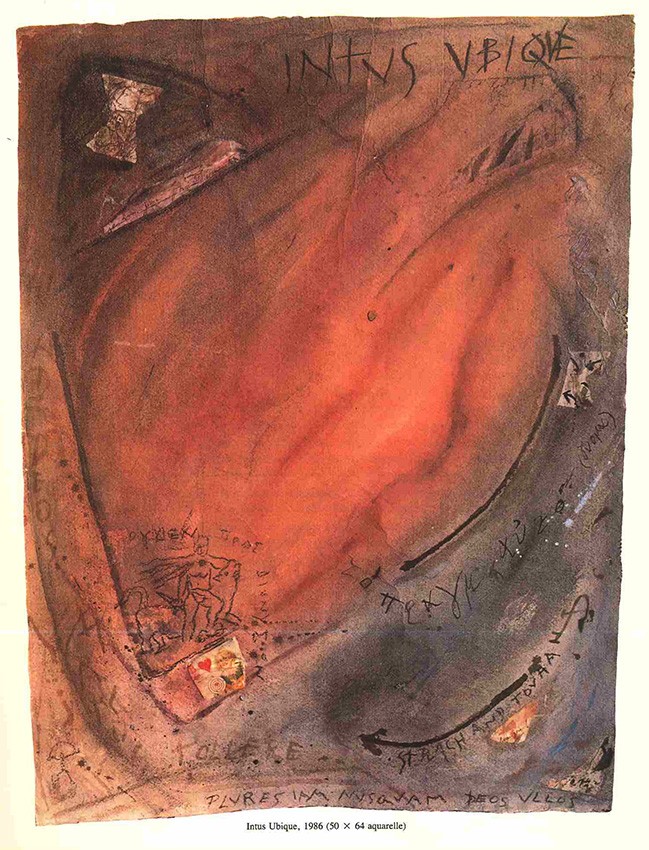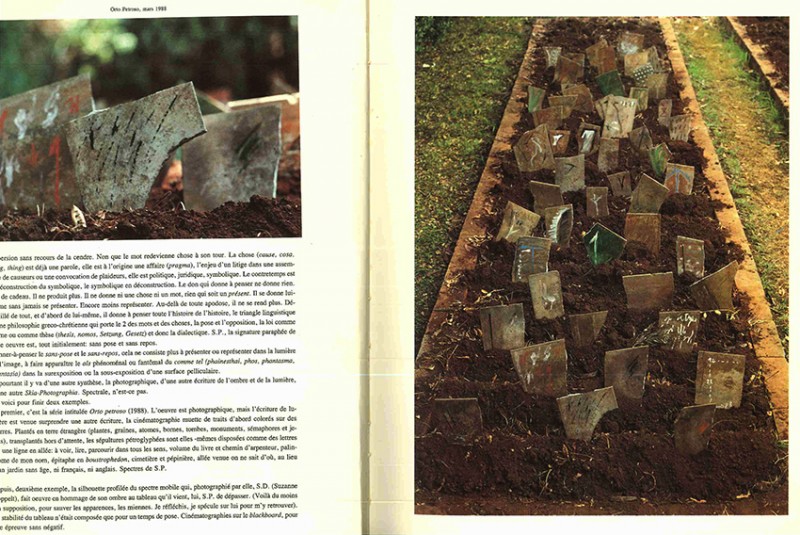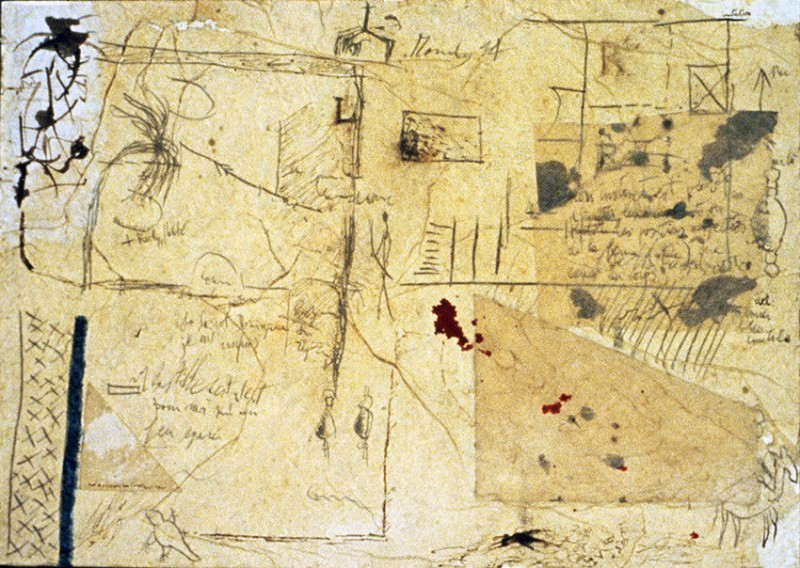
Salvatore Puglia, Interview (Part I)
Once upon a time, we were fully in Europe
Antidot: I’ll start with the usual question: "How should you introduce yourself to the Serbian public? You are Salvatore Puglia, an Italian artist...or maybe a European artist or just an artist?"
Puglia: Italian and European, I would say. I cannot conceive of art or an artist detached from any historical context, and the context of my artistic (and associated political) formation and commitment was Italy and, more generally, Europe in the 1970s.
As far as I can remember, my interest in art came reading the popular art history series entitled I Maestri del colore (published weekly by Fratelli Fabbri Editori from 1963 to 1967), which my father, a simple public clerk, bought every Sunday at the newspaper stand around the corner for the equivalent of 15 centimes of euros. The texts were written by the most renowned international art historians. I was also inspired by all the encyclopaedias, sold door to door, that my father put on the shelves and never touched.
These were the ‘optimistic’ years, when families had some extra money, housing was affordable and culture was relatively accessible.
“High” and low culture have never been as close as in those years.
I also recall watching L’Odissea, the 1968 Italian-German-French-Yugoslavian primetime TV production starring Bekim Fehmiou, which was introduced by the greatest Italian poet, Giuseppe Ungaretti.
Antidot: A few words about your political and artistic formation in that period. Were you politically active? Who were your artistic heroes back in those days? ( L’Odissea was quite popular at the time, have you heard that great Yugoslavian actor Fehmiu wrote an excellent biographical book before he committed suicide in 2010?)
Puglia: I didn’t know who Fehmiou was, before purchasing the Odyssey on DVD a few years ago to show to my children.
In 1967 (at the age of fourteen), I recall saying to my friends, out of school, that we need “order” (my father was an ex-paratrooper in the Salò Republic, and my mother a Mussolini fan, like Sophia Loren in Ettore Scola’s Una giornata particolare).
In 1968, I took part in a street demonstration after Yan Palach’s suicide and against the Soviet Union invasion of Czechoslovakia. I remember having been a bit bothered by the far right students dressed in black, who were clearly manipulating the manifestation.
As a young Catholic, I was active in my local parish, played soccer, and I began mobilizing to combat leprosy in Africa. I remember making a big poster, not very different from what I do today with archive photographs, depicting a girl afflicted with leprosy, partially covered by red translucent paint, and underneath the caption: “She doesn’t use Kaloderma”.
Around the age of 16, I became influenced by the South American theology of liberation, and I linked it to the Guevarist myth. Within a few months I became acquainted with the leftist ideas at my high school.
However, at that time I had closer contacts with my right wing colleagues, and one day, I returned home with a broken nose, and told my mother that it happened by running into a volleyball pole (and not from a karate chop). But, still, we were mostly using fits and sometimes sticks against each other, not weapons.
I went to the university with the intention of studying art history, with a specialisation in Etruscology, but I was too involved in the student movement, and soon found such studies too aristocratic and not masculine enough. I never studied much, but eventually, I managed to graduate with a degree in social history.
In 1973, after the coup in Chile and following the rumours of an attempted military uprising in Italy, I volunteered to undertake my military service, with the idea of convincing my comrades to offset the rumoured coup, which never took place. I was fortunate that my clandestine activities were never discovered.
Back from my fourteen months as a simple soldier, I wanted to work immediately and found employment as a teacher in a primary school for one year. I soon realised that pedagogy was not my favourite field. I was too emotional for being an arbiter of knowledge for children. And, once again, I was too involved in political battles. By March 1977, it became then impossible to go out in the streets without being squeezed between the opposite violence of the State and the more aggressive leftists, the “Autonomi”. I went back, with a few friends, in a more humble everyday political activity in my area, trying to convince retired or marginal neighbours to reduce their telephone and electricity bills, and also organising a kind of direct meat market, against the monopolistic distribution of the traditional food supplies. I did not meet with much success in those endeavours.
I subsequently worked in the historical field, in revues and with grants for practising archival research. Three months after securing a permanent position, I decided to quit and signed a resignation letter, leaving first to Barcelona, then to Paris. It was late 1985. My artistic heroes? After an initial period in Paris, in 1979-1980: Twombly, Tàpies, Bram Van Velde. In June 1977 when in Bologna to complete my history studies, I saw performances by Hermann Nitsch and Marina Abramovic. The word itself “performance” came as a revelation to me.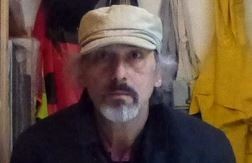
Antidot: Why is the word "performance" so special to you? Fehmiu, Abramovic... The name of two Yugoslavian artists appeared in this conversation in a short period of time. How did the violent break-up of Yugoslavia affect you as a European (Yugoslavia was a sort of precursor of todays unified EU) and a neighbour?
Puglia: The performance: simply the idea that the beauty of a gesture could be comparable, and no less impressive, than the beauty of a painting. To release two rabbits in a gallery space, or to sit at a piano without knowing how to play piano, and still transmit an emotion. Or to invite passers by to brush your naked body, like Abramovic and Ulay did in Bologna. And the fact that what matters is that it “existed”, independently of the presence of a public.
To me, in those years, Yugoslavia was an Eastern European place where you could relatively easily go, as I did with my motorbike, when I was sixteen. During one summer I drove from Zadar to Dubrovnik to Mostar and Sarajevo (I haven’t been to Serbia) talking with anybody that could communicate in English or Italian, but I never had the feeling of an “ethnic problem”. It is true that I was more interested in getting a hammer for pitching my tent, in seaside camping sites popular with British or Hungarian girls. In that sense, we were fully in Europe. And the breakup of Yugoslavia, in the early 1970s was yet to come.
Antidot: Can you say more about your artistic beginnings? Your first exhibition?
Puglia: One of the six roommates with whom I shared a large apartment in Rome brought home a young French man he had met, while hitchhiking in Sardinia. This Frenchman was studying philosophy and went on to become a musician. We developed a friendship, and I eventually went to visit him in France. At that time I was undertaking research in the archives of Rome and the Vatican, and sometimes I would take home left-over papers or copies of documents that would be not be missed by other researchers. With these fragments of history, I made collages and small watercolours, and sent them to him, and other friends. He collected them in a folder and started visiting art galleries (as he told me only subsequently). Then one day he phoned, announcing that I was going to have a show at the ADEAS, the gallery affiliated with the Strasbourg School of Architecture. He had already fixed the dates, so there was no way to refuse.

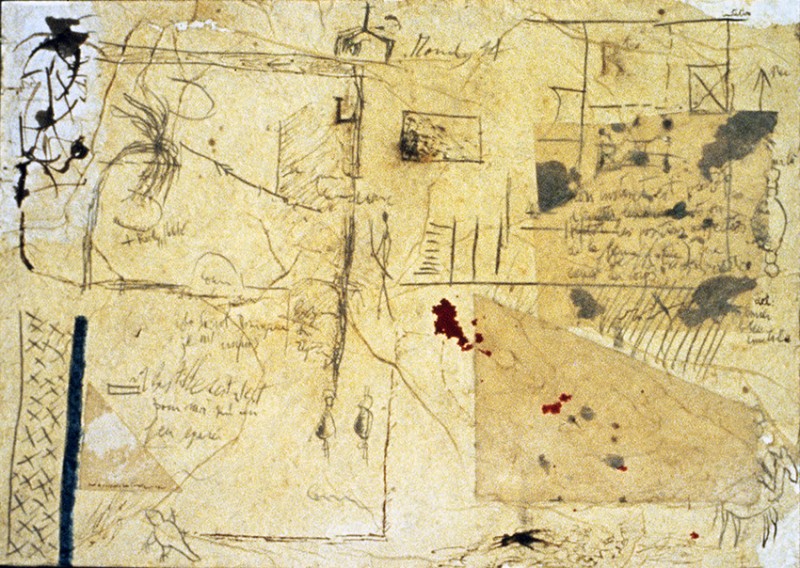

I took a night train bringing along other new and bigger works that were hastily made in the limited time available (maybe a month).
I arrived early in the morning in the Strasbourg. He was waiting for me at the train station with another friend who spent the next few days framing my works and preparing the gallery space.
I remember that upon arrival, at six o`clock in the morning, they took me for breakfast to a coffee shop, which was already open: Café Italia. On the glass door that we pushed there was a poster: my name and the title of the show, Falsapartenza, were written on it. This was in October 1985.
Antidot: Great story! What appeared as a lost for the Vatican turned out to be of great benefit for the art! Have you, by chance, any photo of your work from that period? Visual artists usually started from the scratch, they are forced to stare at the blankness of the paper or the canvas, but you deal with the document from your early beginnings. Thus you've situated yourself firmly in History, right?
Puglia: I think I never glanced at a wall or a canvas waiting for “inspiration”. I rather started with a piece, a fragment of something found somewhere. The challenge was how to create a new context for it, or to present an altered version of its original context. I graduated in history with a thesis on the revolutionary year, 1848, in a neighbourhood located in the centre of Rome. Thanks to the police and law court archives, I was able to examine everyday life in a relatively small community and its apparent harmony and underlying contradictions; and that revealed a sort of breach in time. Then, I noted that people split and take sides, but as a prolongation and amplification of existing relations.
Today, we are in a counterrevolutionary period, in which people dare and are emboldened to say what they might be ashamed to think (as an example, the rumours against foreigners and migrants and those who assist them).
I am currently working at a large installation, which I will probably call Mille e novecento, and whose subject is last century. But my most recent piece is a tote bag that I sold as a limited edition on the Internet. It bears a quote from a letter of an Italian political prisoner, seized by the Fascist police in the 1920s. The language this anarchist or communist worker from the village of Manziana employs is not quite grammatically correct but expressive: Noi altri compagni semo tutti isolati, aspettiamo il momento che ci venga rischiarata un pò di luce che ora vivemo nelle tenebre (We comrades are all isolated, we are waiting for the moment that some light will come to us because we now live in darkness.)
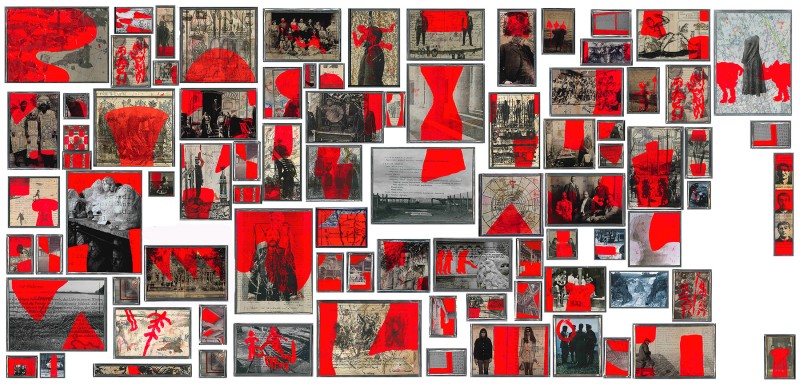
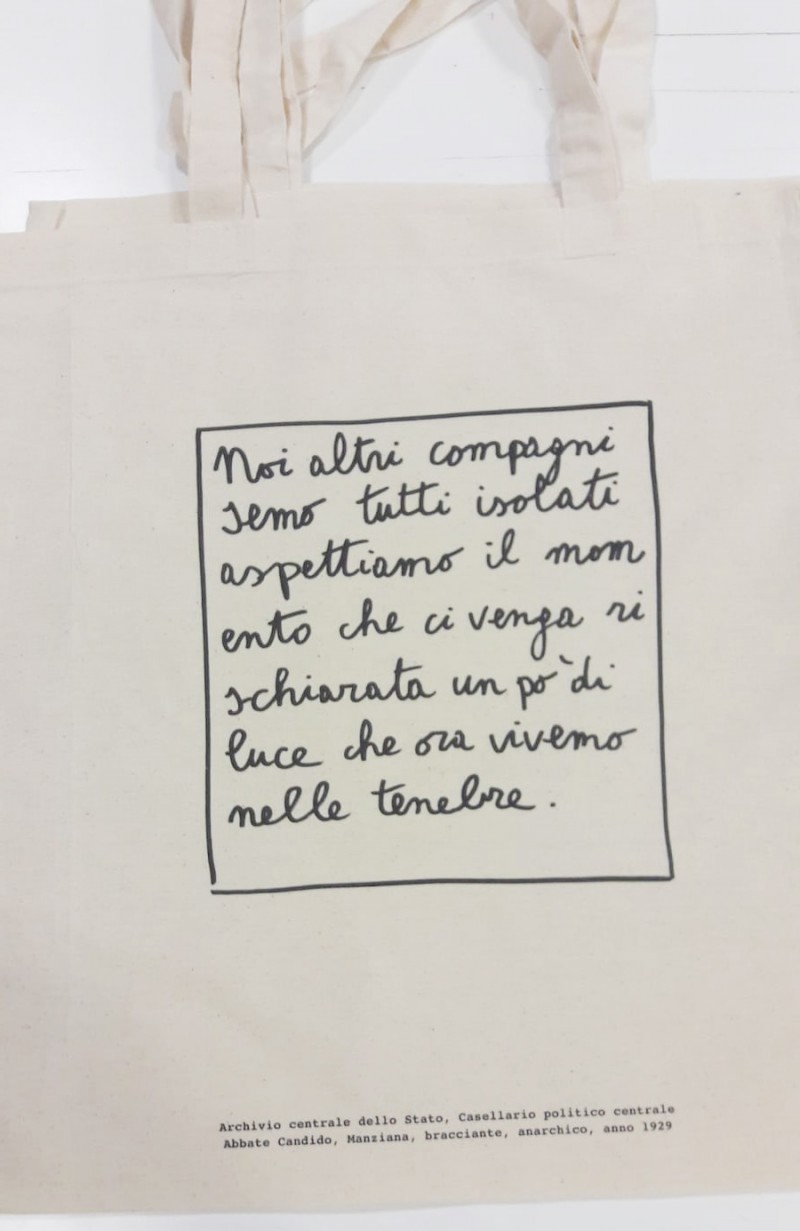
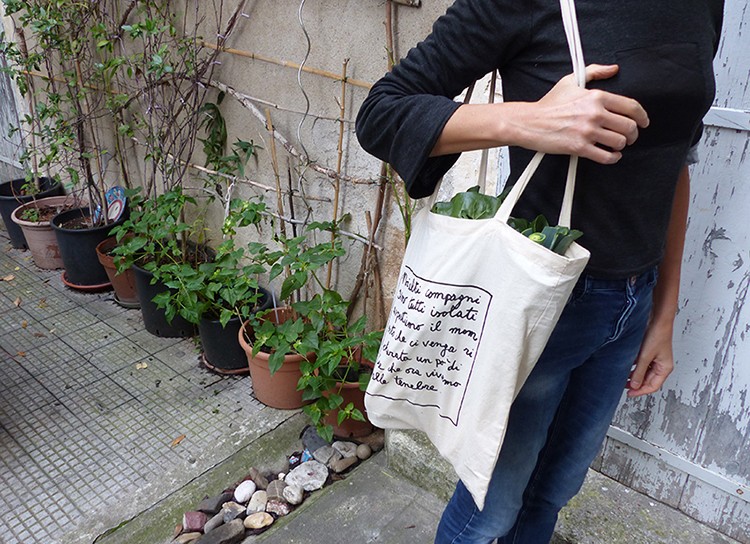
Antidot: We are witnesses that the Far Right is on the rise across the globe (USA, Hungary, Poland, Brazil, etc.) In Italy, Matteo Salvini, a rising star of the European far right, is unashamed about his enthusiasm about rehabilitating Benito Mussolini’s fascist legacy. An antifascist quote on a tote bag, could that be seen as sarcastic epitaph for the XX century?
Puglia: It is true that all the metaphors for the sun of the future, or the luminous spring, or the inevitable re-birth were used in political songs inspired by the Communist parties (in any case, by the left wing) started to become obsolete from 1989 onwards. What made me transcribe the letter of this political prisoner was the Messianic image of the light to come, but also this incipit: Noi altri compagni semo tutti isolati. By definition, a companion is with others, accompanies or is accompanied. And what struck me is the impossibility to say us. The old comrades from my politically-minded youth are still my fraternal friends, and they are still doing things, each one with his/her competences and possibilities, for a world where the idea of a “with” can survive. But still, like me, they paradoxically feel isolated amidst this wave “against the other” that is spreading around Europe (and other continents).
I dare to say that we belong to an “enlightened” minority, fragmented and scattered, ideally linked by a few principles that come from our Catholic and Jacobin past: solidarity with the weaker, social justice, attraction to otherness.
Recently, I made an experiment. I had the tote bag quotation printed on a t-sheet and wore it around the Italian village were I live in summertime, and were most of the votes now go to the xenophobic parties (this village was a “red” one in the region until ten years ago): it is not that people were amused or surprised by my testimonial garment, they just didn’t care to read it. They were not interested in deciphering a text, which was “just” an image for them.
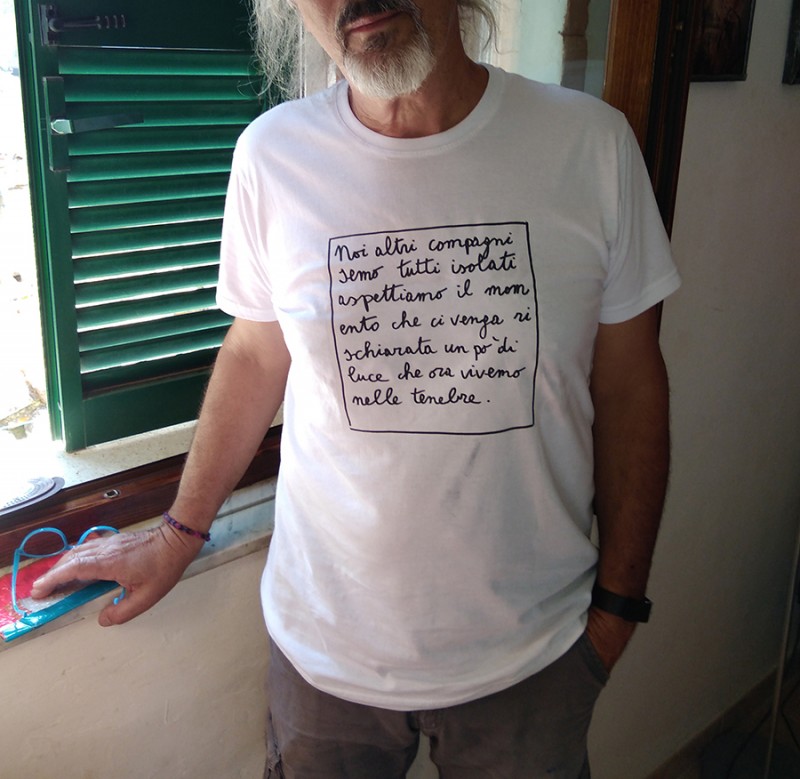
Antidot: Let's get back to chronological order. After your first beginnings, in which directions your art has developed? Can we use the term "developing" as adequate in your specific case? Maybe "researching", "finding new ways" is much better?
Puglia: I think that “developing” can be a good allegory for the first times of a creative route, like a thread that is unraveled into unknown directions. But, again, the biographical element is essential. In those first years in Paris (where I moved when a girlfriend organized for me a first show in an apartment) I had first of all to make my living, and then to “pay” the fault of having fled my job, my fiancée, my friends and companions in Italy. I found logical a little suffering, and I took any kind of manual works in order to pay my rent and to feed my loneliness. I also found time to go to the free lessons at the Collège de France, but most of the intellectual figures I had known in my previous travels to Paris weren’t there anymore (Barthes, Foucault). I went often to the public libraries and I must say that my work, at such moment, was an attempt to “translate” into visual my readings (Hölderlin, Büchner, Derrida). In 1989, if I am not wrong, Jacques Derrida knew my work thanks to a common friend, and wrote an essay on it, “Sauver les phénomènes”, which was published a few years later in a unique issue of the revue Contretemps, with absolutely no comments or reactions in the world of contemporary art.
